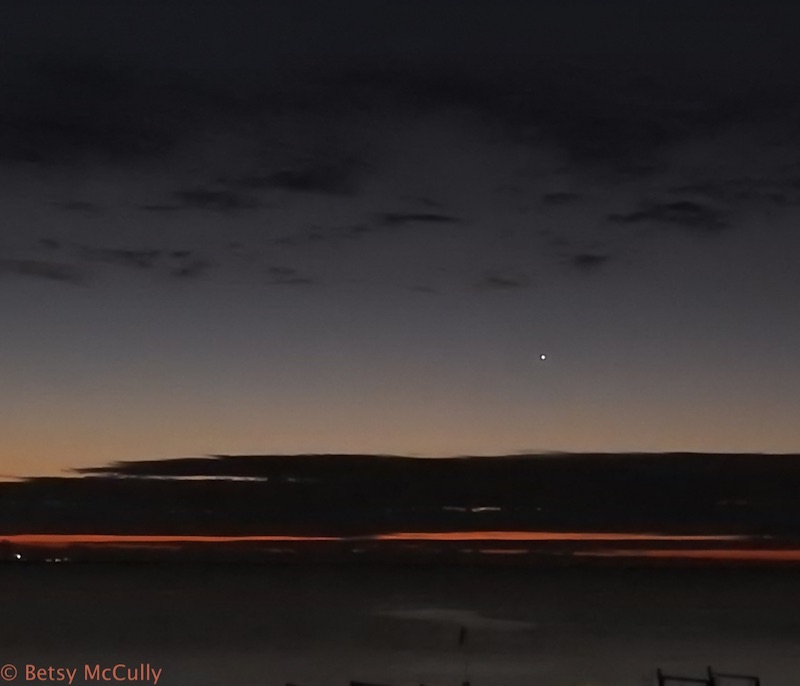

View at EarthSky Community Photos. | At dawn on January 4, 2021, Betsy McCully captured bright Venus over the Indian River in Titusville, Florida. Thank you Betsy!
As 2021 began, the brightest planet – Venus – appeared much closer to the sun on our sky’s dome than it did some months ago. Throughout January, Venus’ angular distance from the sun – its distance from the sun on our sky’s dome – will continue to shrink. Day by day, watch for Venus to sink deeper and deeper into the morning twilight.
Why is Venus getting so close to the sunrise now, as seen from Earth? The answer is that Venus – in its smaller and faster orbit around the sun – is about to “turn the corner” ahead of us in orbit. In other words, Venus is about to pass on the far side of the sun from Earth. Its faster motion around the sun relative to Earth will bring the sun between us and it, and we won’t be able to view the planet from Earth. Venus will be gone from our sky from about late February to perhaps late April. It’ll be most nearly behind the sun, at superior conjunction as viewed from Earth, on March 26. Then Venus will return – to our evening sky this time – in May, appearing near the western horizon as a surprisingly bright evening “star.”
Look outside some morning soon, and you’ll still see Venus easily, above the sunrise glare. Then watch over the coming weeks, as the planet inches closer to the sunrise and finally disappears in the glare of morning twilight. Can you cast your mind outward into space to imagine Venus fleeing ahead of us in orbit?
If you get a good photo, submit it here.
Want more about the planets? Visit EarthSky’s monthly planet guide.
And bookmark this post! We’ll be posting Venus photos here, until Venus disappears from the morning sky.

View at EarthSky Community Photos. | Steven Bellavia in Mattituck, New York, captured Venus at 6:30 a.m. on January 5, 2021. He wrote: “Venus is still a morning star. She reaches superior conjunction on March 26, and will then slowly become an evening star.” Thanks Steven!
Bottom line> Photos of Venus in January 2021. By February, Venus will become exceedingly close to the sunrise glare. It’ll disappear entirely in that glare sometime in February. <a href="http://If you get a good photo, Submit your photos here.
Source:
https://earthsky.org/todays-image/photos-venus-disappear-into-dawn-jan-feb-2021